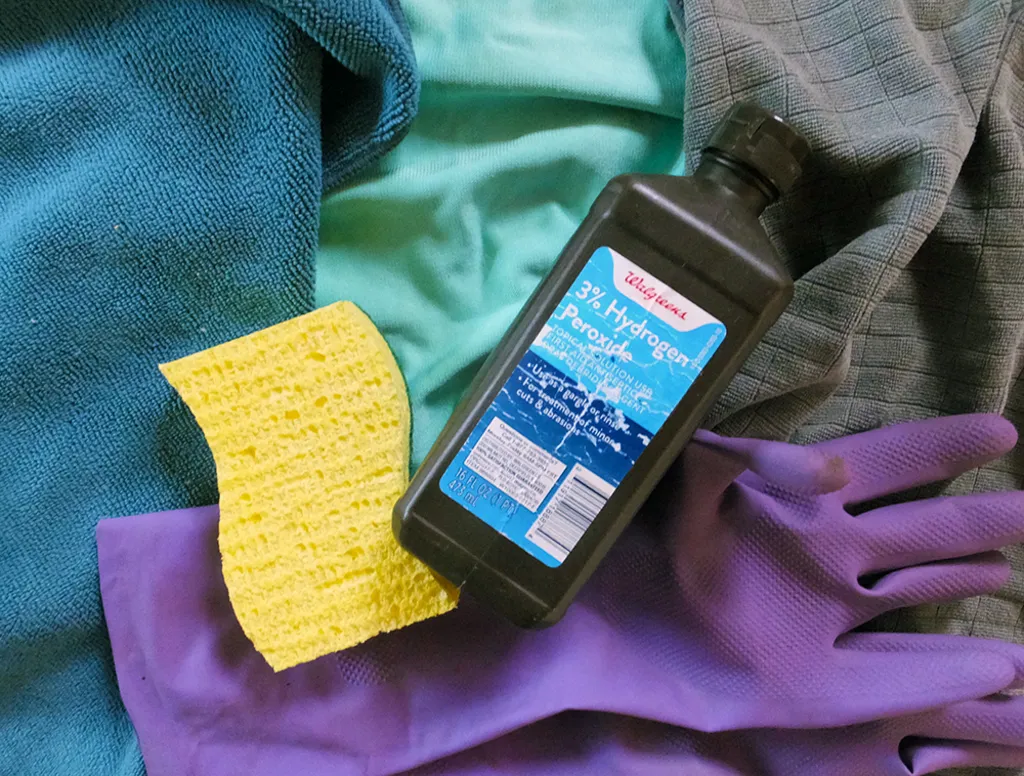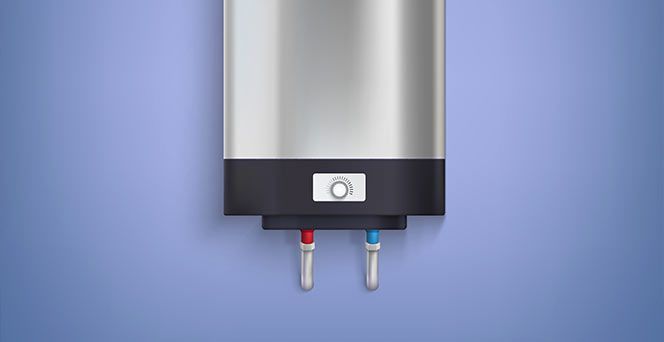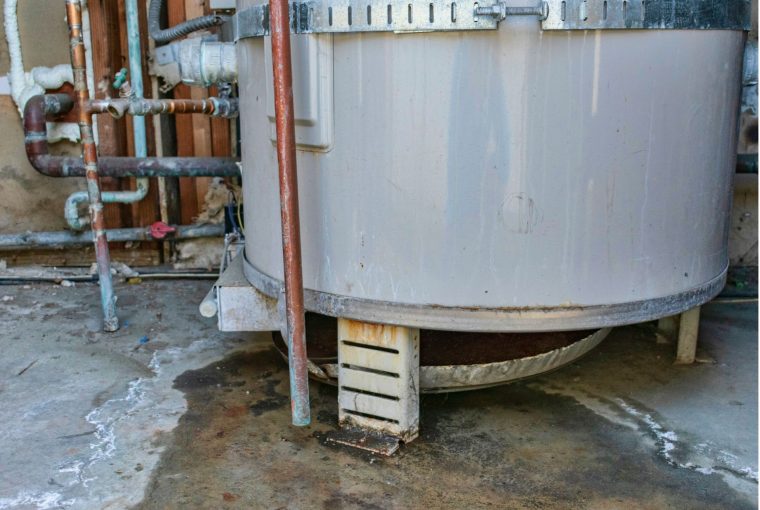Hydrogen peroxide is a powerful oxidising agent that is commonly used in various household applications, including cleaning and disinfecting. But have you ever considered using hydrogen peroxide to clean your hot water heater?
Over time, mineral deposits, rust, and other contaminants can accumulate inside your hot water tank, affecting its efficiency and lifespan. The formula of hydrogen peroxide is effective in dealing with such issues. However, you wouldn’t need to essentially use it until you are facing the spoiled eggs’ smell in your water system which is usually caused by the H2S gas.
This solution tends to be very useful for combating the hydrogen sulphide gas which often gets made up in your hot water heater due to certain factors.
Therefore, if you’re wondering how to add hydrogen peroxide to your hot water heater, don’t worry – it’s a relatively simple process. Here, we’ll walk you through the steps you need to take to safely and effectively use hydrogen peroxide in your hot water tank.
But, first, let’s try to understand the bad smell issue.
Why is there an unbearable bad smell coming from your hot water?
The hot water emits an unpleasant smell that resembles that of spoiled eggs, which can be attributed to the presence of hydrogen sulphide gas (H2S) in the water. H2S is typically formed through the breakdown of organic matter, such as decomposing plants or animals, and may also exist in particular types of groundwater.
Now, what’s causing the gas to be made in the first place? Well, the anaerobic bacteria could be blamed for this. These bacteria are commonly found in water sources. When present in hot water tanks, they can produce hydrogen sulphide gas.
Various environments, such as those with low oxygen levels and high temperatures, can support the survival of anaerobic bacteria. When hot water tanks are left unflushed or uncleaned, these bacteria can thrive and reproduce quickly. During their metabolic processes of breaking down organic matter in the water, they generate hydrogen sulphide gas, which is the cause of the unpleasant smell.
Also, some types of hot water heaters may cause a chemical reaction between the magnesium or aluminium anode rod and sulphur compounds in the water, which results in the release of H2S gas that causes a foul odour.
How to ensure that the smell is coming from the water heater?
If you detect a pungent odour of spoiled eggs within your home, it may indicate that your hot water heating system is the culprit. Nonetheless, before concluding that the heater is responsible for the stench, it’s imperative to ascertain its origin.
The primary step is to shut off the valve for the cold water supply to the heater and let the hot water flow for a few minutes. If the odour dissipates, chances are that the heater is the source of the smell.
Another way to verify the cause of the smell is to examine the hot water for any changes in colour or texture. If the water seems murky or contains sediment, it’s an indication that the heater could be the cause of the odour. Moreover, if the smell intensifies when you use hot water, it’s a clear indication that the heater is responsible for this issue.
Pouring Hydrogen Peroxide in my Hot Water Heater:
Here are the guidelines for safely using hydrogen peroxide in your hot water heater:
- Follow manufacturer instructions:
The first step is to always refer to the manufacturer’s instructions and recommendations for your hot water heater. Using hydrogen peroxide in your hot water heater may void the manufacturer’s warranty, so it’s essential to be aware of any potential implications.
- Turn off the power and gas supply:
Before attempting to put hydrogen peroxide in your hot water heater, ensure that the power and gas supply to the heater are turned off to prevent accidents or damage to the system. Follow proper safety protocols, such as wearing protective gloves and goggles, and providing adequate ventilation in the area.
- Prevent Water Entry
At this stage of the process, it is crucial to close the valve for the cold water to prevent any further water from entering the water heater tank.
- Release Tank Pressure
To alleviate pressure, it is recommended that you turn on a hot water faucet, preferably a nearby one, and also open the T&P valve. The T&P valve, which is typically located at the top of the water heater, is an acronym for temperature and pressure valve. Simultaneously opening the faucet and valve will relieve any accumulated pressure from the hot water heater.
- Empty Some Water
To make space for the hydrogen peroxide that will be added later, it is advisable to drain some of the tank’s water. This is an easy task that can be accomplished by attaching a garden hose to the drain valve, assuming there is no open drain near your water heater.
- Disconnect the Hot Water Outlet Pipe
To add hydrogen peroxide to your hot water heater tank, you have several alternatives. You can take out the T&P valve or the anode rod or simply disconnect the hot water outlet pipe.
- Add 3% Hydrogen Peroxide
Add at least 2 pints of 3% hydrogen peroxide in your 40 or 50-gallon hot water heater tank in order to get rid of the hydrogen sulphide gas. You can easily pour the hydrogen peroxide into the hot water heater via its outlet pipe opening or use other routes, whichever you find convenient.
- Fill the tank with water and allow for proper contact time:
Once you have reconnected everything, it’s time to refill the tank. By reopening the cold water valve, fill your hot water heater with the same quantity of water that was released. Make sure to keep track of the water levels through any nearby hot water faucet. Close the inlet valve when the tank is full. To effectively disinfect the system, allow the hydrogen peroxide to circulate in the hot water heater for the recommended contact time which is 3 hours minimum.
- Rinse and flush the system:
After the recommended contact time has passed, thoroughly rinse and flush the hot water heater with clean water to remove any residual hydrogen peroxide from the system.
- Restore power and gas supply:
Once the system has been rinsed and flushed, restore the power and gas supply to the hot water heater following proper safety protocols and fill the water again.
- Monitor for any issues:
After using hydrogen peroxide in your hot water heater, monitor the system for any changes in performance, odour, or water quality. If you notice any issues, contact a professional plumber for further evaluation and assistance.
Final Thoughts:
It’s important to note that using hydrogen peroxide in your hot water heater may not be necessary for regular maintenance, and it’s always best to consult with a professional plumber or follow manufacturer guidelines before attempting any DIY maintenance or disinfection procedures.
Mishandling hydrogen peroxide or improperly using it in your hot water heater can result in damage to the system, voiding of warranties, or even safety hazards. When in doubt, seek professional assistance to ensure the safe and proper operation of your hot water heater.



